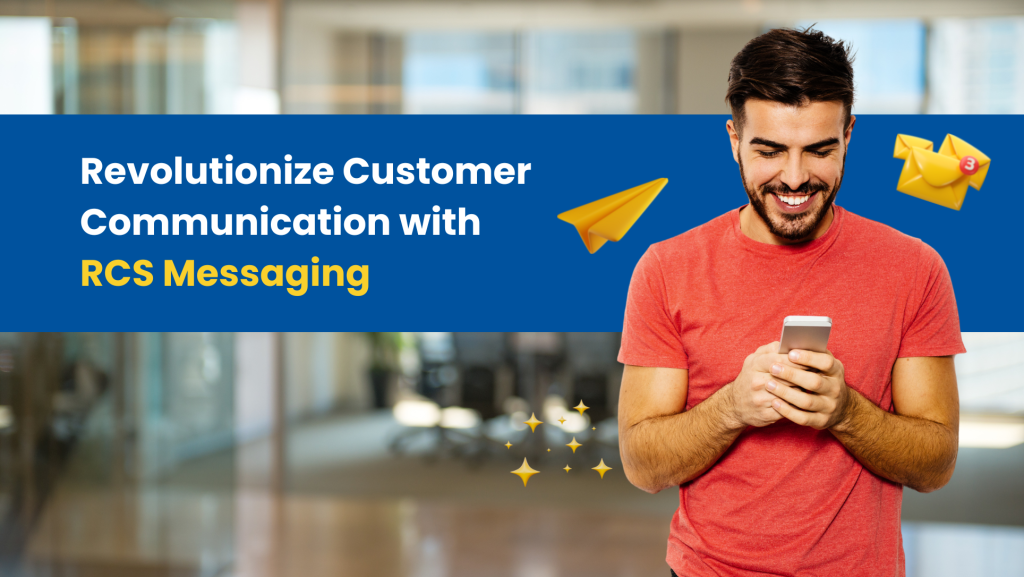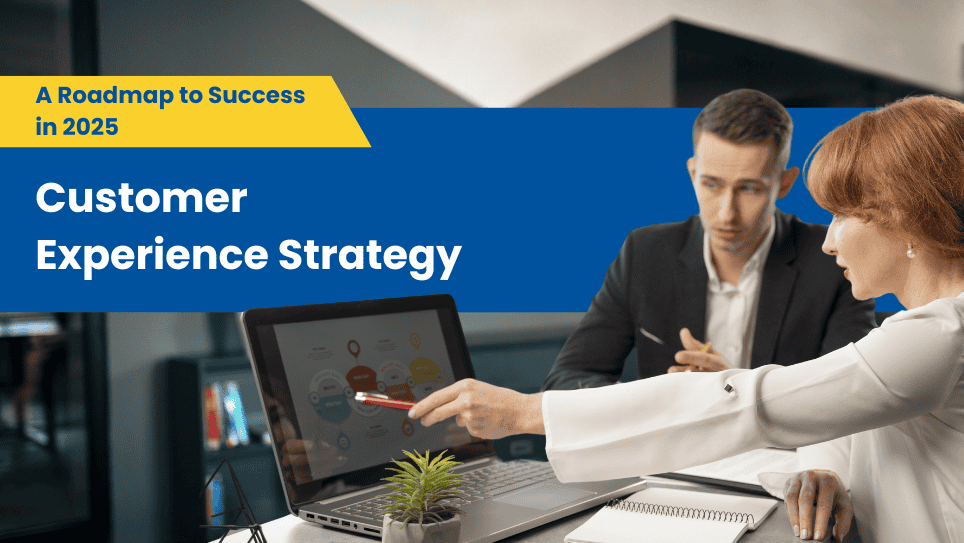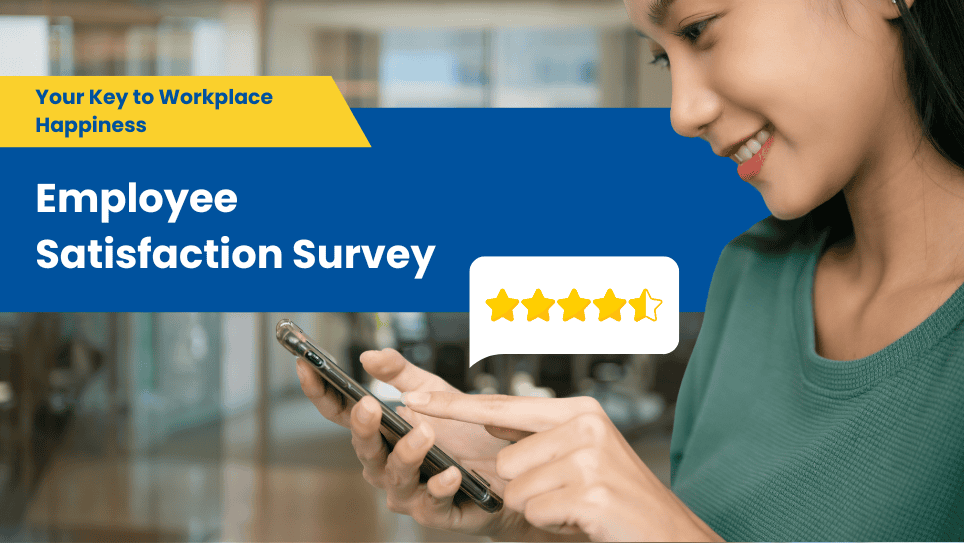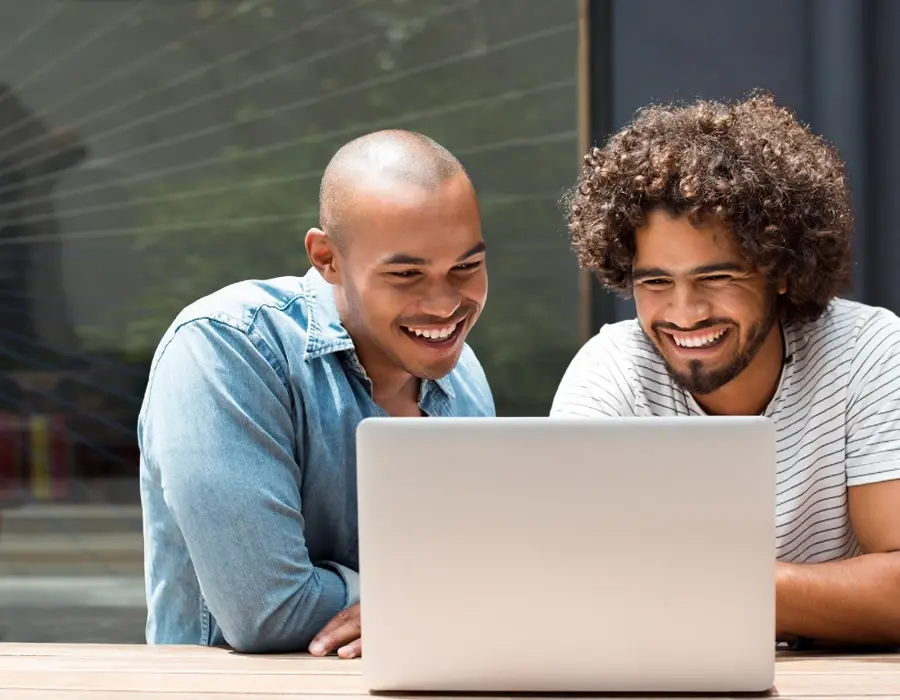Cold Calling Isn’t Dead: Here’s How to Make It Work in 2025

Cold Calling Isn’t Dead: Here’s How to Make It Work in 2025 Is cold calling still effective? Many times, sales professionals find themselves stuck in a frustrating cycle where this seemingly outdated sales methodology seems ineffective. Even for some of the most charismatic individuals, cold calling appears daunting, an unpleasant reminder of their past failures and rejections. But is cold calling completely dead? The sales and marketing industry has been debating cold calling for years, but almost every business is still using cold calling strategies. So, it might still be something worth the effort. Even though we are now living in an era of widely accessible information, cold calling still holds a significant place. In this article, we’ll dig into the details of cold calling and how you can tailor it to meet the requirements of the current business climate. What Is Cold Calling? Cold calling is an outbound marketing tactic where the sales agents reach out to potential customers. It is essentially an unsolicited call that companies do for different purposes, such as generating leads, closing deals, or setting up appointments. A cold call usually starts with conducting market research. Sales teams create a contact list based on research and assign call quotas to specific leads. Reps use the scripts customized to various scenarios like voicemails, shared objectives, and interested prospects. Cold calling success depends on resilience and persistence against rejection. Time is an important factor when reaching prospects. For instance, calling in the late afternoon catches prospects at a highly receptive time. What Is the Difference Between a Hot Call and a Cold Call? Hot calling is when a sales rep or agent reaches out to a sales lead they have communicated with already. It is essentially a step forward in the sales operations. In contrast to cold calling, hot calling engages a sales lead who has shown some interest in what your business is selling. This improves the odds of your call being successful. An example would be a prospect engaging by filling out a form on your website or a prospect you run into at a conference asking you to schedule an appointment for them. In both these situations, you will make a hot call to reach a hot lead. Cold Calling Hot Calling Definition When you reach out to a prospect who has not interacted with or is familiar with your business. When you call a prospect who has shown some degree of interest in your product/service. Lead Awareness Low, as there is no prior interaction with the business. High, because the lead is already familiar/interested in the business. Nature of Communication The effort of communication is usually one-way before the prospect expresses any interest. Two-way communication as the prospect has done some prior browsing or research on your brand. Potential of Conversion Low due to unfamiliarity with the business. High due to an already established interest. Outbound or Inbound Outbound Inbound Stage Awareness stage of the sales funnel. Interest and decision-making stage. Preparation Required A detailed study and research of the target audience. Tracking website visitors and the impact of inbound marketing on the target audience. How to Make Cold Calling Effective? Whether you like cold calling or not, the truth is it is still an essential component of customer acquisition. Cold calling statistics might throw you off. According to a 2025 report by Cognism, the approximate B2B cold-calling success rate is 2.3%, a marked drop from 4.8% in 2024. The low numbers, however, don’t mean you can’t improve your cold calling techniques. Here are a few ways you can boost your odds of cold calling success without having to overwhelm or exhaust your sales team. Embrace Rejection When it comes to sales, rejection cannot be perceived as a dead end. Data from Sales Insights Lab suggests that about 50% of cold call prospects are an ill fit for your brand or what you are trying to sell. Getting a no isn’t really a bad thing; it helps with filtering out prospects for the sales funnel. Companies like HubSpot train their employees to consider a “no” as a signpost rather than a stop sign. Play The Long Game According to RAIN Group, 2025, it takes an average of 8 cold calls to reach a potential customer, and chances of making a sale are minimal on the initial touchpoint. That is why high-functioning companies such as Gong focus more on moving the prospects down the stage funnel instead of immediate conversions. Instead of forcing a sale, focus more on how you can get a follow-up call or set up a meeting. Prioritize And Know When to Walk Away Being a sales expert, you’d be able to effectively gauge whether a prospect is interested or not. Not all leads need your incessant efforts. Using CXMs like Antlere, successful sales agents can now filter out leads and invest their time smartly. A report by Cognism shows that cold callers waste about 33% of their week on low-potential leads. Learn when to cut conversations short. In sales, your energy is a currency, and you must learn how to spend it in a way that gets the best outcomes. Follow a Script, Not a Monologue Although cold calling scripts can be helpful, they are not fixed contracts. Research by Gong suggests that sales agents who are too bookish about their scripts see a 23% drop in the engagement rate compared to those who adapt in real time. Expert cold callers know how to balance spontaneity with structure. If a prospect is conversational, slow your pace and build a rapport. If they are data-driven and direct, there is no need for the small talk. Improve Your Odds of Cold Calling Success with A Power-Packed CXM Cold calling doesn’t have to be guesswork. With Antler’s intelligent CXM software, you get the necessary tools to transform every call into a potential success. From multichannel integration and smart call insight to lead tracking and centralized customer data, Antlere equips your sales team with everything they require to tailor outreach and close maximum deals. Ready to transform your outreach? Book a free demo and explore how Antlere enables optimal engagement and smart conversion. Contact Us
What Is RCS Messaging and How It Transforms Customer Communication

What Is RCS Messaging and How It Transforms Customer Communication Imagine a notification popping up on your phone. It’s some unknown number about a sales promotion on your favorite. The message is plain text, no images, and a dodgy-looking link. Would you be inclined to click it? Now imagine the same alert, but this time it’s aesthetically enticing. There is imagery, the store’s logo, product details, and appealing colors. It even comes with a button saying, “Buy Now,” eliminating the need for a follow-up query or link. Which of the two experiences would get you more interested to engage? The second example is driven by RCS messages, a new-age messaging protocol designed for smartphones with features like clickable buttons, rich media, and brand-tailored messages for brands. RCS messaging makes it more engaging and enjoyable for customers to connect with businesses. Let’s learn some more about RCS messaging and what it can do for your customer experience and performance. What does RCS message mean? Rich Communication Services, or RCS, is a messaging protocol that represents and drives modern-day smartphone messaging. It comes with advanced features, including high-resolution videos and images, suggested responses, rich cards, and branded sender data. Also, it has real-time indicators like “read” and “typing,” keeping customers well-informed and always updated. Customers use these engaging features across communication platforms like Facebook Messenger and WhatsApp. With RCS messaging, however, RCS messaging comes with in-built interactive features. Businesses, eCommerce in particular, benefit a great deal from RCS messaging. Its rich and engaging features can streamline transactions, boost engagement, and add a layer of personalization to messaging. RCS Messaging vs. SMS Messaging: How Are They Different In simple words, RCS messaging is an enhanced and modernized version of SMS messaging. In contrast to the RCS message, SMS does not need IP or require cellular connection or Wi-Fi. SMS messaging is carried out directly via the cellular network, such as voice calls. SMS messaging is set on the Global Systems for Mobile Communications protocol, defining the sending and receiving of messages across a network. RCS messaging requires a functional internet connection or mobile data. Some other essential contrasts are based around branding and media capabilities. RCS SMS Media Features Images, videos, GIFs, carousels, PDFs, tappable buttons, rich support cards, maps, and more. Plain text without any multimedia features/content. Network Dependency Needs a functional data connection (LTE, 5G) or Wi-Fi for messages to be transmitted. Only a cellular network is required. A Wi-Fi is not necessary. Texting Features The character limit for texts is 3072 characters. The character limit for texts is 160 characters in a single text message. Branding RCS messaging includes logos, graphics, and verified sender data. Alpha Sender IDs are available in some countries but not supported universally. Reach More than 1.5 billion active Android users and expanding reach across Apple devices. 100% of phone users. User Experience Enhanced in-built features including quick-reply buttons and interactive buttons. Basic text chat features. Encryption and Security RCS messaging is encrypted in transit. No encryption. Why Does RCS Matter for Your Customer Service? RCS is a mutually beneficial protocol for both customers and businesses. It creates a dynamic, consistent, and safe user experience. Support teams and sales agents, on the other hand, can use the interactive features to communicate with ease. Using these enhanced features, companies can deal with customer queries more effectively. Rich Media Support RCS messages allow you to share videos, images, QR codes, and carousels, enabling customer service agents to provide proactive service. This is particularly useful for: Sharing of links/documents, maps, or menus Sending product demos, images, and videos Branded Conversations RCS allows brands to use their name, visual identity, and logo, fostering credibility and trust. Maintaining a consistent and impactful brand image is incredibly important in today’s competitive business climate. Customers are more inclined to engage when they know who’s reaching them. Real-Time Communication In contrast to the traditional SMS, RCS messaging enables a live chat experience. Customers can respond in real time, see typing or seen indicators, and know when their message is delivered and read. This makes interactions more human and quicker. Higher Conversions & Engagement RCS messaging is user-friendly and more visually engaging. With colors, graphics, and imagery, customers are more likely to connect with the brand. Studies indicate an enhanced response rate compared to an email or a traditional SMS. Interactive Features With suggested actions, carousels, and quick replies, RCS messaging drives customer journeys directly through the chat. It incorporates options like “track my order,” “talk to an agent,” or “reschedule appointment.” This simplifies self-service and lowers the customers’ effort. Using RCS Messaging to Improve CX RCS has revolutionized messaging software for brands. It comes with enhanced features to enrich and simplify engagement, making your customer experience more visually appealing and effortless. Use High-Quality Product Images With RCS, you can create an immersive experience for the customers. Carousels, high-resolution graphics, and media cards. Carousels make it easy to display various products or services at once and encourage users to swipe through the slides. Brands like Nike and Sephora know how to use rich and appealing media for their customer interactions. Nike uses immersive product videos and imagery, while Sephora showcases bright carousels for personalized recommendations and product lines. In fact, visually captivating content tends to generate higher social media engagement, turning simple support into a brand-building opportunity. Offer Suggested Actions and Replies Suggested actions and replies in RCS messaging allow customers to proceed with a company easily and efficiently. For instance, businesses could offer a “schedule now” or “contact us” button. These action prompts make it easier for the users to take action via the message conversation. Also, auto responses enable recipients to follow through on their appointments and tasks. Tickets, Requests, and Send Payments RCS messaging makes transaction handling effortless with the message thread. Customers don’t have to download apps or visit external websites to make a purchase, get tickets, make and confirm bookings, and receive receipts. All takes place in one smooth and interactive conversation. Financial service and
Company Core Values: 8 Strong and Inspiring Examples

Company Core Values: 8 Strong and Inspiring Examples In the current work climate, your work isn’t just confined to holding a job; it’s a reflection of an individual’s core values. It is necessary that company core values are well-aligned with employees’ values to sustain an engaged workforce. Company core values fundamentally shape your employees’ perception of their job. They influence decisions, drive behaviors, and lay down a tone for your culture. According to Gallup, only two in ten employees feel connected to their workplace culture. These company core values become a foundation only when they are lived every day and modeled by leadership and management. That’s when employees get acknowledged for the behaviors and actions that bring your company core values to life. So, what exactly are company core values? What are Core values of a Company? Company core values are essentially cultural fundamentals that define the principles and beliefs across your company and its employees. Some of the most successful companies have core values that reflect their founders’ values and vision. Company core values are not just corporate-oriented statements on your website. They must have an underlying meaning and purpose, as they: Influence employees’ mindset at work Define how employees interact with customer and amongst each other Hold company leadership and management accountable Enhance company growth with vision and purpose Are characteristic to every company Now, more than ever, employees understand the significance of work-life balance, knowing what their company motto is, and the effect of its practices on communities, individuals, and the environment. Employees want to be associated with workplaces that have purpose and integrity and are living by their company core values. Also, they must value development and growth opportunities that satisfy, motivate, and challenge them at the same time. Important Company Core Values with Value Examples Integrity It’s essential that during chaos and tricky situations, you remain transparent, ethical, and honest. Integrity is about standing by your values and principles despite all circumstances. It develops a great deal of trust between teams and fosters credibility with customers. Patagonia is a prime example of exercising integrity as one of their company core values. Patagonia builds integrity directly into their supply chain transparency and production practices. Their business practices are a direct reflection of their values in manufacturing and supporting activism. Customer Obsession Placing customers at the center of your company means knowing what they need, what problems may arise, and meeting or exceeding their expectations. That value requires more than service; it requires empathy, it requires anticipation. Amazon has 16 leadership principles, with Customer Obsession being the first one. It is this intrinsic value that propels their relentless innovation, product development, and support mechanisms around the world and makes Amazon the gold standard for corporate core values designed around customer satisfaction. Innovation Being innovative means that we stay inquisitive and adventurous and try to push the limits to find improved alternatives. It allows teams to adapt and evolve continually, which should be a key element of any contemporary business ethos. Innovation is a day-to-day practice at Google. Google allows its employees to dedicate 20% of their time to whatever they want and has launched products such as Gmail as a result. It demonstrates the extent to which organizational values, such as innovation, can compel industry-defining change. Teamwork and Collaboration This core value is focused on collaboration towards a common goal, respect for diversity of thought and contribution, and, through that, mutual respect and encouragement. Working together creates synergy, and quicker solutions is a cross-department need. Microsoft touts its cross-functional collaboration among its global teams. Their products, such as Teams and Office 365 are just the outcome of their inner company culture about collective success. Accountability To be accountable means owning up to the results, owning up to the mistakes, and the lessons learned. This fundamental value encourages accountability, encourages results, and fortifies company culture. Netflix promotes freedom with accountability. Accountability is one of the major expectations laid out in their culture deck. Employees are given freedom and are expected to deliver—this is a great case of values leading to scalable excellence. Diversity and Inclusion D&I stands for diversity and inclusion and means respecting, celebrating, and giving power to diverse backgrounds, perspectives, and experiences. It enhances teams, drives innovation, and creates a workplace that is more reflective of society. Salesforce lists “Equality for All” as one of its four corporate values. Mosaic works to promote inclusivity through public reporting and internal initiatives, a contemporary example of what core values can do for business and society. Excellence In product development, customer service, or internal processes, excellence means always striving for the best. Brand trust as a core value enables continuous improvement for businesses. At the heart of this excellence is Apple’s unshakeable dedication to design, usability, and innovation. A clearly defined core value translates into every product and all customer interactions, which shows just how powerful a company value of this kind can be. Sustainability By its own definition, sustainability implies that your business decisions are made with today in mind but not harming the future. The need for environmentalism and the long-term thinking that comes with it are increasingly appreciated by employees and customers. Unilever is another brand that embeds sustainability in their strategy, starting from product innovations and progressing to net-zero targets. This is a great demonstration of core values enabling profit for purpose. What Company Core Values You Should Consider So, here you have some core values that can inspire you about identifying some for your own organization: Empathy Respect Adaptability Learning Responsibility Transparency Trust Passion They are conversations that touch values that establish the basis of solid, growth-oriented businesses of tomorrow. The Power of Values in Action Setting the company core values is only half the battle. To be effective, they need to be rooted in your culture—from recruitment to leadership and from marketing to service. Zappos demonstrates that doing everything in alignment with your company values makes you a brand differentiator. These are not just
Understanding Customer Intent: A Complete Guide

Understanding Customer Intent: A Complete Guide Have you ever considered buying a product from a particular brand but ended up getting it from another company? Why does that happen? The company you chose to buy from fit all your needs and preferences, hence influencing your purchase intent. It could be any appealing factor like enhanced support, better pricing, or added features. That’s why it becomes incredibly important to understand customer intent so that you can better cater to their needs and grow your business. What Is Customer Intent Customer intent is often referred to as the buyer’s intent or the reason that drives a customer’s journey to purchase. In the customer service space, however, it means a lot more than that. Identifying customer intent provides insight into what message your customer is trying to convey beyond what they say. It could be a feature query, appreciation for great service, or a cry for help. Customer intent is essentially what persuades a customer to side with a brand. It’s about an in-depth understanding of your customer’s needs beyond the surface knowledge. Today’s customer expects personalized experiences so that they feel valued and heard. However, using this approach is tricky for many companies. That’s where CXM software and AI automation enter the picture. It helps you identify customer intents, generate support tickets, and empower agents with in-depth data on customer needs to provide smooth support. Why Is Customer Intent Important? Discovering the unspoken customer intent behind all interactions will enable you to better serve your customers, enhance their experience, and boost retention. Use Customer Sentiment to Inform Future Development By understanding your customers’ feedback and request intent, you can invest in feature development that fits your customer preferences and expectations. Personalized Customer Experience and Better Engagement Customers are more likely to buy from a brand that offers a tailored experience. Today’s consumer wants to feel connected to and seen by the businesses they are dealing with. Customer intent analysis frees up support agents to handle more complicated tasks and craft tailored responses that take care of customer queries and concerns directly. Data-Driven Decision Making For companies to outcompete in the business world, simply responding to customer queries is not sufficient. Customer intent analysis provides a pool of data on customer pain points, preferences, and latest trends. These insights enable businesses to make informed decisions about their products and services. Types of Customer Intent Informational Intent: The customer visits a website seeking detailed information to answer their question. Navigational Intent: The customer is trying to find a specific webpage or some sort of information resource. Transactional Intent: Completing a task the customer wants includes performing business transactions like purchasing and enrolling in a service. Commercial Investigation: Watching and comparing competitive products or services before making a purchasing decision. Customer Intent in Helpdesk Systems Customer intent can be leveraged in systems like Antlere Helpdesk in the following ways: Customized Solutions: Support representatives can deliver personalized options based on customer queries and behaviors. Optimized Distribution: Sentiment knowledge aids intent understanding, thus enabling informative routing of queries to representatives or departments. Resource Allocation: Determining intents classifies overload on assistant personnel created through alternate, non-interactive, and self-service materials. Evaluating Feedback: Feedback from customers can, when analyzed through intent, reveal a plethora of reasons why products or services offered need revision. Collecting and Analyzing Customer Intent Data Customer intent in business can actively be utilized when the organization does the following: Employ Interaction Monitoring: Analytics enable automated monitoring of interactions done by customers. This expands patterns ascertainable from data. Integrate Artificial Intelligence: Changes suggest employing automated systems whose client behavior falls in with prior data, thus predicting customer intent. Machine learning enabled. Real-World Applications and Benefits Increased Sales: Understanding marketing intent enables a business to tailor marketing and sales plans to specific audiences. Reduced Support Costs: Guided assistance and self-service options reduce the number of support tickets needing attention. Product Improvements: Intent insights aid in the development and improvement of products. Conclusion Using customer intent analytics to optimize helpdesk systems like Antlere is no longer an option; it is a necessity. By analyzing the various reasons for customer interactions, businesses can manage to offer better support and enhance loyalty while growing their revenues. With shifting demands from customers, being in sync with customers’ intents will become the most important component of providing outstanding service.
What Is Customer Engagement Platform Essential for Business Success

Customer Relationship Management: The Key to Business Growth and Customer Loyalty A customer’s journey has evolved a great deal over the years. Running a successful business has never been this complex. Sales personnel and business owners must keep a consistent point of communication with their customers, do relevant follow-ups, discover cross-selling and upselling opportunities, and create customer retention campaigns while making sure that the business revenue goes up continually. Customer relationship management allows businesses to streamline their sales operations, enhance interdepartmental communication, and elevate business relations. In this article, we’ll explore the concept of customer relationship management, benefits of CRM, and how to go about selecting the most fitting CRM for your business. What Is Customer Relationship Management? Customer relationship management is a strategy that enables businesses to both manage and evaluate customer interactions during every stage of the customer lifecycle. The main purpose of customer relationship management is to mount customer satisfaction alongside loyalty building while growing sales through enhanced communication and service optimization processes. The customer relationship management system brings sales, marketing, customer service, and support interactions together into one centralized platform. Companies across all stages—from startup businesses to massive international organizations—depend on customer relationship management systems to develop customer relationships and maintain customer retention. Understanding customer needs for collaboration and evolving business dynamics demand customer relationship management solutions. Today’s business world experiences record high customer standards because of strong marketplace competition. Businesses succeed in customer retention by delivering customized experiences together with efficient support and frictionless interactions. Successful customer relationship management depends on effective interaction processing which involves data consolidation and workflow automation. Benefits of Implementing a Customer Relationship Management Strategy Enhanced Customer Experience Through purchase tracking and monitoring preferences and interactions online platforms enable businesses to gain better insights about their customers. Organizations leverage this data to deliver two-way personalized suggestions alongside anticipatory help services to their customers. Improved Sales Performance Sales groups use customer relationship management software to administer leads and track transactions while achieving better revenue projections. Research from Salesforce found customer relationship management (CRM) system adopters can see their sales revenue grow by 29%. Better Marketing Campaigns Through customer relationship management systems marketers have tools to segment audiences and create focused campaigns which push conversion rates upward. CRM-powered automation offers businesses the capability to nurture leads while sending timely relevant content to them. Stronger Customer Retention and Loyalty The implementation of Customer relationship management systems benefits both small businesses and enterprises by enabling companies to promptly solve customer problems while maintaining proactive engagement with customer requirements. According to research by Bain & Company, businesses can enjoy profit increases ranging from 25% to 95% by improving customer retention by as little as 5%. Efficient Customer Service and Support Businesses benefit from Customer Relationship Management tools which combine helpdesks and AI-powered chatbots into a single integrated support solution. By minimizing response time responsiveness from businesses towards their customers’ needs creates improved satisfaction. How to Choose the Best Customer Relationship Management Tool for Your Business Organizations should choose customer relationship management software based on their industry specifics alongside business dimensions and exclusive requirements. Let’s delve into some important factors to consider about your customer relationship management software. Identify Your Business Needs CRM systems for small businesses need to deliver easy usage at cost-effective prices whereas enterprise-level CRM platforms demand strong scalability capabilities and comprehensive analytic features. Look for Integration Capabilities A top-tier customer relationship management CRM system needs to operate without hitches with tools like email management programs alongside accounting software and e-commerce solutions. Prioritize User-Friendliness CRM implementations determine success by their widespread user adoption rates. Choose a customer relationship management system which provides material instructional support along with mobile access features and easy-to-use software design. Consider Cloud-Based vs. On-Premises Solutions Web-hosted customer relationship management tools deliver remote access and flexibility, yet businesses can achieve superior data security through on-premises systems. Assess Customer Support and Pricing Analyze various CRM providers by assessing their customer support quality alongside pricing options and offered features and select the system which suits your company best. The Future of Customer Relationship Management The current CRM revolution through AI and automation enables businesses to understand customer patterns while creating tailored marketing messages and high-quality service solutions previously unavailable. Grand View Research’s analyst forecast shows global CRM market expanding to become $157.6 billion by 2030 because of machine learning growth together with big data analytics advances. Final Thoughts For modern business success today, businesses need customer relationship management due to increased marketplace focus on customers. Organizations of any size will benefit from developing advanced CRM methods which enable them to strengthen partnerships with clients while growing their revenue and ensuring sustainable business outcomes. Your service requires the innovative improvements necessary for managing customer relationships? Learn how Antlere’s latest customer relationship management solutions allow your company to undergo the business transformation you need! Contact Us Frequently asked questions What customer service representative skills are essential for success? A successful customer service representative thrives on empathy, active listening, and effective communication. Combining these with strong technical knowledge and adaptability ensures exceptional customer experiences. How do customer service representatives balance customer needs with company policies? Customer service representatives balance customer needs by providing tailored solutions within company guidelines. They leverage emotional intelligence and problem-solving skills to navigate conflicts effectively. How can technology improve customer service representative duties? Advanced tools like CRM systems and AI-powered chatbots enhance the efficiency of customer service representatives. These technologies streamline processes, reduce repetitive tasks, and provide valuable insights. What are the growth opportunities for customer service representatives? Experienced customer service representatives can progress to senior roles like team leaders or managers. These positions often come with higher salaries and responsibilities, such as training teams and refining customer service strategies. How can Antlere support customer service representatives in highly regulated industries? Antlere provides compliance-focused features that help customer service representatives adhere to industry regulations. Its centralized communication and data-driven insights streamline operations while maintaining compliance. A successful customer service representative thrives
Why Your Customer Service Representative the Driver of Exceptional Support

Why Your Customer Service Representative the Driver of Exceptional Support Customer service representatives (CSRs) are the fundamental drivers of customer experience, serving as the first contact point between companies and their clients. Business success relies on the way customer representatives answer queries, and direct clients to understand their products and services. This article explores the role of a customer service representative as well as the skills they need to drive a business to success. What Does a Customer Service Representative Do? A customer service representative assists customers by speaking with them over the phone, email, chat, or face-to-face. They specialize in handling customer problems through fast and precise product support services. Their work is not just confined to solving problems; they help customers feel valued, which eventually leads to repeat business. What Are the Key Responsibilities of a CSR? Responding to customer inquiries promptly. Support customers by solving their problems using solutions that match their specific requirements. Record all customer exchanges and their feedback for future use and reference. Team up with office staff to create better ways of running business operations. Identify opportunities to offer extra products that match what customers currently want. A healthcare customer service representative guides patients through their insurance claims processes and helps them book medical appointments while offering procedure information to ensure optimal comfort and support. Essential Skills for a Customer Service Representative A customer service representative needs both people skills and technical abilities to do their job effectively. Let’s delve into the key attributes that set top-performing CSRs apart: Communication Skills Service representatives should know how to communicate with customers with clarity, concision, and empathy. A CSR should express complicated information in an easy-to-understand way and present real interest in customer assistance. Problem-Solving Abilities The job demands fresh thinking approaches when Customer service representatives deal with payment questions or technical problems. Adaptability Customer service representatives must learn and master different digital communication platforms to meet customer needs using up-to-date technology. Emotional Intelligence When customer service reps show they understand customer emotions they help reduce stress and build stronger relationships. Time Management Customer service representatives provide faster help when they sort their tasks and address multiple customer needs at once. How Antlere Empowers Customer Service Representatives Antlere helps customer service representatives work better in the current demanding service environment. Antlere’s solutions help organizations optimize their customer service by simplifying interactions and delivering useful insights through better communication. Key Benefits of Antlere for CSRs: Centralized Communication: The platform gives CSRs the ability to handle customer queries through different channels without missing any customer requests. Data-Driven Insights: Through Antlere’s analytical solutions representatives gain insights into customer behavior to deliver customized service experiences. Automation Features: CSRs can concentrate on difficult customer problems while the automatic systems handle their ticketing and follow-up duties. Enhanced Collaboration: Antlere enables customer service teams to connect smoothly with other departments, leading to quicker solutions and better service for customers. Antlere’s tools help CSRs work faster and deliver better support, helping businesses succeed in competitive markets. The Evolving Role of Customer Service Representatives Technology advancements are changing how customer service representatives do their jobs. Modern tools are transforming the traditional role of customer service staff. The constant growth of technology is reshaping what customer service representatives need to know and do today. CSRs now handle difficult customer situations while the automated technology deals with routine customer interactions. The 2023 McKinsey report reveals organizations with AI customer support systems reach solutions 30 percent more quickly. Senior Customer Service Representatives CSRs with significant experience progress to supervisory roles to coach fresh staff members as they lead teams and assist in making important business choices. Such roles offer greater duties and usually provide better pay. Employee compensation for customer service representatives spans $30,000 to $50,000 per year depending on the sector and job site. How to Build a Winning Customer Service Representative Resume You need to create an impressive customer service representative resume to secure a place in this competitive job market. Here are some tips: Describe job experiences with major customer problems and your success in making work processes better. Demonstrate your effectiveness with hard numbers like your achievement of raising customer satisfaction scores by 15%. List all important customer service skills including CRM software knowledge plus conflict handling and flexibility abilities. Real-World Examples of Exceptional Customer Service Amazon: Setting the Benchmark Amazon puts customer needs first in all its business practices. The representatives have full power to ensure customer satisfaction through instant refund approval and direct solutions when delivery goes wrong. Zappos: Beyond Shoes Zappos leads the way in online shoe retail by training its CSRs to build true customer bonds through personalized service. Their service model produces strong customer devotion and spontaneous brand promotion. Conclusion Back-end problem resolution is only one aspect of what customer service representatives do when they represent brands and guide customer experiences. CSRs can succeed in their jobs and benefit their company when they learn important service skills and adapt to digital changes. Antlere helps CSRs do their jobs better by making processes easier and giving them useful data to provide excellent customer support. You need to focus on customer service investment to gain customer loyalty and achieve growth whether you hire new staff or advance to senior roles. Ready to Elevate Your Customer Service? Find out how Antlere enables your customer service team to succeed with the latest technology and meaningful insights. Contact us today to learn more! Contact Us Frequently asked questions What customer service representative skills are essential for success? A successful customer service representative thrives on empathy, active listening, and effective communication. Combining these with strong technical knowledge and adaptability ensures exceptional customer experiences. How do customer service representatives balance customer needs with company policies? Customer service representatives balance customer needs by providing tailored solutions within company guidelines. They leverage emotional intelligence and problem-solving skills to navigate conflicts effectively. How can technology improve customer service representative duties? Advanced tools like CRM systems and AI-powered chatbots enhance the efficiency of customer service
What Makes Anonymous Surveys a Powerful Tool for Your Business

What Makes Anonymous Surveys a Powerful Tool for Your Business Many modern feedback systems rely on anonymous surveys as a source of candid information while preserving the respondent confidentiality. In the article, we’ll learn the importance and the benefits of anonymous surveying, find out how we should choose the right tool and why it is a must have in any organization aiming at improving their processes and outcomes. Why Do Anonymous Surveys Matter An anonymous survey gives respondents the opportunity to share their real thoughts without fear of being judged or other repercussions. This is especially the case with situations where the outcome is of a sensitive nature like a customer satisfaction study, or the feedback given to an employee. A PwC study discovered that 41% of employees refuse to provide honest feedback if their responses are shown to be traceable. It shows how anonymous surveys are playing a key role in creating transparency and trust. So, if you are creating an online survey to see employee engagement or customer insights, ensuring anonymity is important because you need to get unfiltered data that you can ultimately act on. Antlere Smart provides easy-to-use surveys that always prioritizes respondents’ confidentiality. What Are the Benefits of Anonymous Surveys Anonymous surveys bring numerous benefits to an organization: Honest Feedback It decreases the biases and motivates the respondents to give honest and unfiltered feedback. For instance, employees may feel more comfortable sharing their views on workplace culture using an anonymous feedback form. Increased Participation Rates If your users are assured that their information is safe and identity is protected, they are more likely to be involved. This is especially great for tools those seeking a free anonymous survey solution. Actionable Insights Honest feedback provides a create deal of clarity. Companies can address specific concerns and make significant changes using the data collected from anonymous surveys. Protecting Sensitive Subject Matters With an anonymous survey, people can talk about topics like harassment, mental health, or managerial practices – things they probably wouldn’t discuss out in the open. Improved Decision-Making When you have reliable data, leaders can leverage it to make good decisions. Anonymous polls help a company determine sentiment before it implements policy change: for example, the scores of employees’ opinions in anonymous polls can inform a company on the direction in which to improve or adjust. How to Choose the Right Survey Tool Clearly, choosing the right tool to create surveys protecting anonymity is important. Here are some tips: Prioritize Privacy and Security Your survey tool should comply with robust data protection standards. For secure data collection, end-to-end encrypted surveys are perfect, and tools like Antlere smart make it all the easier. Check for Anonymity Options Look for features that make your surveys as anonymous as possible. Many users wonder if Google Forms can truly be anonymous. While Google Forms often require specific settings, dedicated platforms such as Antlere Smart simplify the process to a great extent. User-Friendly Interface Both survey creators and respondents need a simple interface. Whatever anonymous survey you are learning to make or if you are trying to learn how to create a Google Form anonymous this should be a piece of cake. Customization Options Select a tool that enables the product to get branded as well as comes with custom questions. Some users may even ask how to make Google Form anonymous, and others require an anonymous poll maker with more flexibility. Free vs. Paid Features Select between free and paid versions after evaluating your needs first. The good news is that many of these tools offer a free survey online service, but advanced features often come with a subscription. If you are looking for free anonymous survey email platforms, Antlere Smart offers great features at zero cost and ensures privacy. Let’s explore how Antlere Smart makes anonymous surveys so easy. In the world of anonymous survey tools, Antlere Smart certainly stands apart. With its seamless interface, robust security features and customization choices, it’s the right option for organizations of all sizes. From designing an anonymous feedback form to deploying a free survey online, Antlere Smart always prioritizes user experience and confidentiality. Explore Antlere Smart today and get surveys that inspire trust and obtain actionable insights! The Bottomline In a world that is highly data-driven, anonymous surveys are the best way for an organization to get honest feedback. By ensuring privacy and trust, they unlock the opportunity for substantial change. From understanding employee sentiment to gauging customer satisfaction, anonymous feedback strategy ensures your data is actionable and authentic. Whether you are still learning how to create an anonymous survey or looking for the best anonymous poll maker, having a fitting tool can make all the difference. Pick platforms such as Antlere Smart to ease the process and take your feedback collection to the next level. Are you ready to see what makes our anonymous surveys so powerful? Sign up today to gather actionable insights with Antlere Smart. Contact Us Frequently asked questions What is the difference between an anonymous survey and a confidential survey? An anonymous survey ensures the identity of the respondent is entirely unknown, even to the survey creator, while a confidential survey collects identity information but keeps it protected. If you’re using a platform like Antlere Smart, you can create an online survey that prioritizes anonymity or confidentiality based on your requirements. Can Google Forms be truly anonymous? Google Forms can be anonymous, but only if specific settings are adjusted. You need to ensure that email collection is turned off and that the form doesn’t ask for identifying information. If you’re looking for a simpler solution, platforms like Antlere Smart and Survey Hero are designed for free anonymous survey creation with built-in anonymity features. How do I create an anonymous survey for sensitive topics? For sensitive subjects like workplace harassment or mental health, select a platform that guarantees respondent anonymity, such as Antlere Smart. It allows you to create surveys with features like an anonymous
Digital Employee Experience: A Complete Guide in 2025

Digital Employee Experience: A Complete Guide in 2025 In a world that is primarily driven by tech, companies are now starting to realize that digital employee experience (DEX) is the cornerstone of employee satisfaction and productivity. Digital tools and platforms of employee interaction, from onboarding to daily tasks, greatly shape employees’ engagement and efficiency. So, what is a digital employee experience strategy and why is it important? In this article, we’ll look more closely at the essential components, benefits, and procedures of building a smooth digital employee experience that meets the needs of today’s business. What exactly is Digital Employee Experience? Digital employee experience (DEX) is the experience employees have with the digital tools, platforms and technologies available to them in their company. It ranges from communication and collaboration tools to project management software and HR systems. In a nutshell, employee experience management in a digital context is about improving the technology ecosystem to improve ease of use, decrease friction and increase employee satisfaction. Using technology is an essential part of an effective digital employee experience strategy, including the development of seamless and intuitive experiences that enable employees to bring their best work to life. Poor digital workplace experience results in frustration, reduced productivity, and greater friction. Personalized and smart customer experience, on the other hand, results in innovation and engagement. Components of Digital Employee Experience A successful digital employee experience management framework involves many critical components. Let’s delve into some of these elements. Technology Ecosystem At the core of DEX lies the employee experience technology used every day. These include collaboration platforms; email systems and industry focused employee experience software. Companies like Google and Microsoft have shown the way to make these tools more user friendly and robust. Ease of Use It’s a non–negotiable component. Tools and platforms must be intuitive and available; with a minimal learning curve. The DEX platform is streamlined so that employees spend less time troubleshooting and more time on valuable tasks. Integration and Interoperability A cohesive digital employee experience platform lets people move between backends (tools, systems) the same way that they do between tasks. For instance, Slack’s ability to work with Google Workspace shows us how interoperability can improve the digital workplace experience. Feedback Mechanisms Employee experience management software that is effective not only collects real time feedback in order to pinpoint the pain points and ways to improve but also enables employees to access that real time feedback. Organizations are empowered to make data driven decisions using platforms like Antlere. Support and Training Comprehensive training and sound IT support is still needed to get the best out of even the best technology. What Are the Benefits of Digital Employee Experience Increased Productivity A seamless digital employee experience strategy reduces barriers and allows employees to work faster and smarter. According to statistics, 25% of productivity rise comes from companies with optimized digital tools. Enhanced Employee Satisfaction Having a positive employee experience management platform helps with not only morale, but also frustration, which in turn helps retention rates. Attracting Top Talent In modern times, employees greatly value technology. Being able to provide a better employee experience solution to your people can set your organization apart in the talent market. Cost Savings Systems that are efficient cut downtime and IT overhead, and the savings can be incredible. For instance, one Fortune 500 company saved $1.5 million annually in productivity losses, by integrating a digital experience management system. Innovation An empowered workforce with the right employee experience tools in hand is more likely to experiment, to innovate, and to drive business growth. How to Create an Exceptional Digital Employee Experience Assess the Current State The first step is to review your organization’s existing digital experience framework and operating model. Surveys and analytics from employee experience management software along with survey questions allow you to identify strengths, weaknesses, and gaps. Employees Involvement Collaboration is key. A digital employee experience software is used to gather input from employees about what they need and what they prefer. Choose the Right Technology Choose a robust digital employee experience platform that works for you towards your goals. Choose tools that scale, are integrated, and user focused. Prioritize Integration Make sure that your tools and platforms can integrate seamlessly, developing an Employee Experience management ecosystem. Fragmented systems are not ideal for productivity. Provide Training and Support Give employees the tools and the knowledge to understand how to use technology. A strong digital employee experience strategy will include such trainings programs, tutorials, and IT support. Monitor and Optimize Measure the effectiveness of your DEX platform continuously using analytics and employee feedback. Use this data to iterate. Bottomline Digital employee experience is no longer optional; it’s a competitive necessity. Investment in DEX serves as a strategic tool for increasing productivity, changing workplace culture positively, and enabling satisfaction, innovation, and growth. Companies that care about digital employee experience can attract, retain and secure talent for the future. Antlere understands the value of employee experience management. We enable enterprises to maximize their digital experience using industry leading employee experience technology. Antlere brings seamless integrations, actionable analytics and more to your workplace. Are you ready to enhance your digital workplace experience? Get in touch with Antlere CX Platform today! Contact Us Frequently asked questions How is digital employee experience (DEX) different from traditional employee experience? Traditional employee experience focuses on the overall environment, culture, and in-person interactions at the workplace whereas DEX specifically emphasizes the digital tools and platforms employees interact with daily, such as communication, collaboration, and HR systems. Does DEX have any impact on hybrid and remote work environments? Digital employee experience becomes essential in hybrid and remote setups as employees must be entirely dependent on digital tools to stay connected, collaborate, and manage tasks efficiently. A poor DEX in these environments can lead to disengagement and productivity loss. Can AI enhance the digital employee experience? AI can personalize experiences by offering tailored recommendations, automating repetitive tasks, and providing smart assistants for troubleshooting and
Customer Experience Strategy: A Roadmap to Success in 2025

Customer Experience Strategy: A Roadmap to Success in 2025 Today’s market is competitive, and businesses can’t simply focus on products, quality or even the price. Customer experience (CX) is a key driver of growth, a means of building brand loyalty, and, ultimately, of sustainable success. In short, building a customer experience strategy is no longer an add on but is fast becoming the path to differentiation in the market. In this guide, we will explain what a customer experience strategy is, how it’s important, introduce you to its key components, and provide practical advice to create a holistic, impactful approach that aligns to your business goals. What Is a Customer Experience Strategy? Customer experience strategy is essentially an approach to creating consistently excellent, seamless, personalized, and positive experience across all customer touch points. Whether it’s marketing or post purchase support, it all matters as to how the customer perceives the brand. A well-defined customer experience strategy helps you drive customer satisfaction, increase customer retention and hence boost the revenue. To put it simply, a customer experience strategy makes sure all the processes, teams, and departments work in collaboration to create a customer journey that leaves a positive, lasting impression for your brand. Why Is Customer Experience Strategy Important? According to research, customer experience is one of the top factors that lead to customer loyalty. PwC reported that 73% of consumers state customer experience is an important factor in their purchasing decisions. Furthermore, 65% of customers say that a positive experience with a brand is more important than great advertising. A great customer experience strategy can be the differentiator that sets your brand apart from your competitors, lowers churn rates, and increases loyalty. Here are a few compelling reasons why you need a strong customer experience strategy: Improved Customer Retention: Customer experience management strategy is important if you want to reduce churn because happy customers are more likely to return to your brand. Increased Revenue: Because of repeat business and referrals, companies with strong CX strategies have also shown increased customer lifetime value (CLV). Brand Advocacy: A good cx customer experience strategy can make your customers the brand ambassadors and share positive experience with others. Higher Customer Satisfaction: A customer experience framework helps us ensure that all customer interactions are consistent, and meaningful and enjoyable for the customer. The Key Elements of The Customer Experience Strategy A robust customer experience strategy requires several of these elements working as part of a whole. Let’s take a look at some essential components required for building an effective customer experience strategy: Understanding Your Customers Before you create a customer experience strategy you need to know your target audience. Who are your customers? What are their pain points, preferences and needs? Surveys, focus groups, and customer feedback can give you useful insights. That’s where customer experience design comes to play, as you tailor the experience to align with the preferences of your target audience. Personalization There is no better way to improve customer experience than through personalization. In fact, Salesforce says 70% of consumers won’t stay loyal to a company that doesn’t know enough about them as individuals. Using customer data, you can deliver personalized experiences across all your channels including tailored recommendations, custom offers, and communication. Seamless Multi Channel Experience The implications of a digital customer experience strategy need to focus on maintaining a consistent experience, delivered through any platform—whether in the store, online, or on mobile applications. These touchpoints must transition seamlessly amongst consumers. Brands like Apple and Amazon are doing an exceptional job in this area, providing a seamless CX whether their customers are visiting their stores or browsing their digital features. Employee Engagement and Training Employees play a substantial role in your customer experience. They must be well-trained in customer interaction. By improving the internal processes, your teams offer a higher level of service to the client, enhancing the overall experience of the client. Feedback and Consistent Improvement A customer experience company that collects customer feedback constantly and frequently analyzes it is better prepared to adjust and improve. A customer service strategy that fosters continuous communication with customers helps you spot areas for improvement. Tracking performance is possible with tools such as Net Promoter Score (NPS), and customer satisfaction survey, to name a few. Customer Service Strategy Vs. Customer Experience Strategy While they’re sometimes used interchangeably, there is a difference between a customer service strategy and a customer experience strategy. Customer service strategy involves interacting with your customers only when they need help (such as troubleshooting or asking queries) whereas the customer experience strategy includes the full journey from the first touchpoint to post-purchase. Despite the distinct features, both customer service strategy and customer experience must work in harmony to generate the best customer experience. Role of Customer Experience Strategy in Digital Transformation In this tech-driven era, it has become important for every business to have a digital customer experience strategy that meets modern consumer needs. A good cx strategy uses digital tools and platforms—like chatbots, live chat, and mobile apps—to essentially offer customers rapid and responsive service. For example, Starbucks has taken a strong cx design to enable ease of digital order experience through its app. It also enables customers to earn reward point, pay digitally, order tracking and more to ensure a seamless experience making the customer loyal to the company. Adding digital tools to your customer strategy not only makes life simpler but also helps gather helpful data that can improve the CX even more. How To Create Your Customer Experience Framework A customer experience framework will assist you in implementing your customer experience strategy. It should describe specific objectives, the technologies you’ll use, and the processes you’ll execute and drive that create a positive customer experience through all touch points. Some best practices for creating a customer experience framework include: Mapping the customer journey to highlight friction points Incorporating a customer feedback loop in your operations Aligning internal teams with your customer experience objectives Leveraging technology to
Employee Satisfaction Survey: Your Key to Workplace Happiness

Employee Satisfaction Survey: Your Key to Workplace Happiness In today’s fast-paced corporate world, companies can now see how satisfied employees can lead to a more successful business. Employee satisfaction survey is a powerful way of gauging this. As opposed to the traditional HR check ins, these tools provide practical insights that can radically improve the company’s culture, employee engagement and productivity. Now let’s dig into what an employee satisfaction survey is, why it’s important, and how your organization can best use one. What Is an Employee Satisfaction Survey? An employee satisfaction survey is a crucial tool to help your organization identify problems to prevent your employees from leaving. An employee satisfaction survey is essentially a structured questionnaire meant to collect employees’ feedback on different features of their work experience like job satisfaction, workplace environment, and managerial effectiveness. These surveys give companies an idea of how employees are feeling about their job, where they need to take measures to improve and help them to strategize ways to encourage a positive working environment. Why It Matters According to research, satisfied employees outperform their dissatisfied coworkers by 12% on the productivity front. In addition, according to the Gallup study, companies that have happy staff earn 21% more than the average! The correlation between satisfaction and performance means that an employee satisfaction survey is a need for today’s organizations looking to make it and stay in business. Why Is an Employee Satisfaction Survey Important? Enhancing Retention Rates One of the biggest challenges businesses face today is high turnover. Regular employee satisfaction surveys conducted will help identify dissatisfaction early so that a proactive solution can be taken. For example, Google’s surveys examine employee flexibility and work life balance, which has led to a dramatic rise in their employee retention. Boosting Productivity A happy workforce makes for a productive workforce. Companies can therefore use surveys to get a better picture of bottlenecks, or areas of concern, and then make changes to the situation to increase overall efficiency. For example, employees at Netflix score highly when they are presented with autonomy in surveys that the company conducts regularly. Building Trust and Transparency When organizations seek feedback through employee satisfaction survey tools, it fosters trust. Employees feel heard, valued, and motivated to contribute more meaningfully. In turn, this creates a culture of transparency where feedback drives continuous improvement What Are the Different Types of Employee Satisfaction Survey? To reap the full benefits, organizations need to pick the right type of survey. Here are the most common ones: Pulse Surveys Pulse surveys are short and conducted frequently to give you real-time insights into employee sentiments. They are particularly useful for finding out how much of an impact policy changes have. Comprehensive Surveys These extensive surveys are filled out yearly or every two years and include subjects as wide as workplace satisfaction, management, and firm culture. Custom Surveys Customized to certain needs, custom surveys examine specific challenges or projects within the organization, from diversity and inclusion to employee well-being. How to Design an Effective Employee Satisfaction Survey? For your efforts to have impact, your surveys need to be actionable. Here are some key considerations: Ask the Right Questions The purpose of the survey should resonate in the questions you ask. For example, specific queries on the issue of workload, career development and workplace environment. Some common employee satisfaction survey questions include: To what extent, on a scale of 1 to 10, are you satisfied with your role now? Are you a person who feels appreciated and who their bosses recognize for what they do? Is there a good enough growth and advancement opportunity? Leverage Technology Employee satisfaction survey software makes the entire process smooth; it is simple to collect and analyze data. Customizable templates with real time analytics and actionable insights are provided by Antlere’s smart survey solutions. Ensure Anonymity A safer way to get honest feedback from employees is when they feel safe. Anonymity allows us to be honest and truthful in our data. How to Implement Survey Results Gathering data is only the first step. It is interpretation and acting on those findings that gives real value. Analyze the Data With advanced employee satisfaction survey tools, you can see trends and how things are being tracked as well as the strengths and areas where you can improve. In fact, let’s say poor communication was a concern raised by more than half of those working there, which means the company will need to improve its communication strategies inside. Develop Action Plans Utilizing survey results, targeted initiatives must be created. For example, if employees feel misunderstood regarding careers, create mentorship programmes or clear routes to promotion. Communicate Back to Employees Transparency is key. Publish the survey findings and steps which your organization has planned to take. For example, Microsoft publishes a summary of survey results, and keeps employees informed on the progress of related initiatives. Company examples that lead with an employee satisfaction survey. Google Google enjoys a well-deserved reputation for its workplace culture and the sophisticated IT tools it uses to gather insights into everything from work life balance to diversity. Awards that placed them on the “Best Places to Work” lists have consistently arisen from their commitment to employee feedback. HubSpot Hubspot company has a great reputation of leveraging surveys to get an insight on how people feel about us as a company. They share the results with their employees often and build a culture of sharing and trust. Salesforce Instead, Salesforce’s survey for employee satisfaction is about employee well-being, resulting in initiatives such as mental health programs coming directly from survey insights. Here’s what employee satisfaction surveys should track. To measure success, organizations should monitor specific metrics: Net Promoter Score (NPS): How likely are employees here to recommend your company? Engagement Score: Determine how satisfied those in employees’ roles are with their engagement. Turnover Intent: Determine how likely it is they will leave in the next year. Technology no longer has the option of being an add on. Employee


